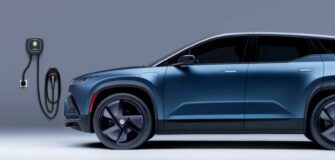Soaring Through History: Classic Cars That Redefined Cool with Massive Wings

In the swinging 1960s, the world of automotive aerodynamics was akin to a playground of possibilities. The journey from streamliners to ground-hugging wings was transformative, and Lotus Formula One engineers played a pivotal role by turning aircraft wings upside down. This innovation wasn’t just about speed; it marked the birth of cool. Fast forward through decades, and we find ourselves reminiscing about classic cars that not only harnessed aerodynamics for performance but also flaunted some seriously massive wings.
Dodge Viper ACR (2008):
In the United States, where they like things big, the fourth-generation Dodge Viper roared onto the scene with a 600bhp 8.4-litre V10 engine. As if that wasn’t enough, Dodge introduced the ACR (American Club Racing) package, boasting an even more substantial rear wing. It wasn’t just hairy; it was the beast on the track with uncompromising power.
De Tomaso Pantera (1971-’92):
A supercar that defied time, the De Tomaso Pantera remained on the market for an astounding 21 years. Evolving alongside historical events, it embraced wider wheel arches and, of course, a sizeable rear wing. A true icon of endurance and style, the Pantera left an indelible mark on the supercar landscape.
Mercedes-Benz 190E 2.5-16 Evolution II (1990-’93):
The battleground was the German Touring Car Championship (DTM) in the early 1990s, and Mercedes-Benz wanted to take the lead. Enter the Evolution II of the 190E, featuring adjustable suspension, a wider body kit, and a substantial rear wing. The design wasn’t just about looks; it aimed to reduce drag and increase downforce, a true fusion of form and function.
Toyota Supra (1993-’96):
The fourth-generation Toyota Supra quietly became an underground hero in the UK. With road tests singing praises of its twin-turbocharged 3.0-litre engine, the Supra was the unsung hero of speed. Fast forward to the early 2000s and a certain movie franchise featuring an orange Supra—The Fast and the Furious—propelled it into the limelight, earning the Supra a fresh legion of fans.
Lamborghini Countach (1974-’90):
When the Lamborghini Miura felt a bit outclassed, Marcello Gandini crafted the iconic Countach shape. While the original was a teenage dream, the Countach gained an extra edge in 1975 when Walter Wolf Racing enhanced it with more power, wider wheels, and, of course, a rear wing. This marked the beginning of the Countach’s evolution into the outrageous supercar legend we know.
Porsche 911 (993) GT2 (1993-’98):
Porsche’s track-focused aspirations birthed the 993-generation 911 GT2, a rear-wheel-drive marvel with a 424bhp turbocharged flat-six. Nicknamed ‘The Widow-maker’ for its tricky handling, the GT2 sported plastic front wings for lightness and a distinctive rear wing with air scoops. It wasn’t just a car; it was a powerhouse on the road.
Whether roaring down the track or gracing the streets, these classics with their wings spread wide symbolize an era where automotive dreams took flight. As we look back, we celebrate not just the speed and power but the audacity of design that turned these cars into timeless icons. In the world of classic cars, the wings weren’t just for flying; they were for soaring through history, leaving an everlasting imprint on the hearts of enthusiasts.









